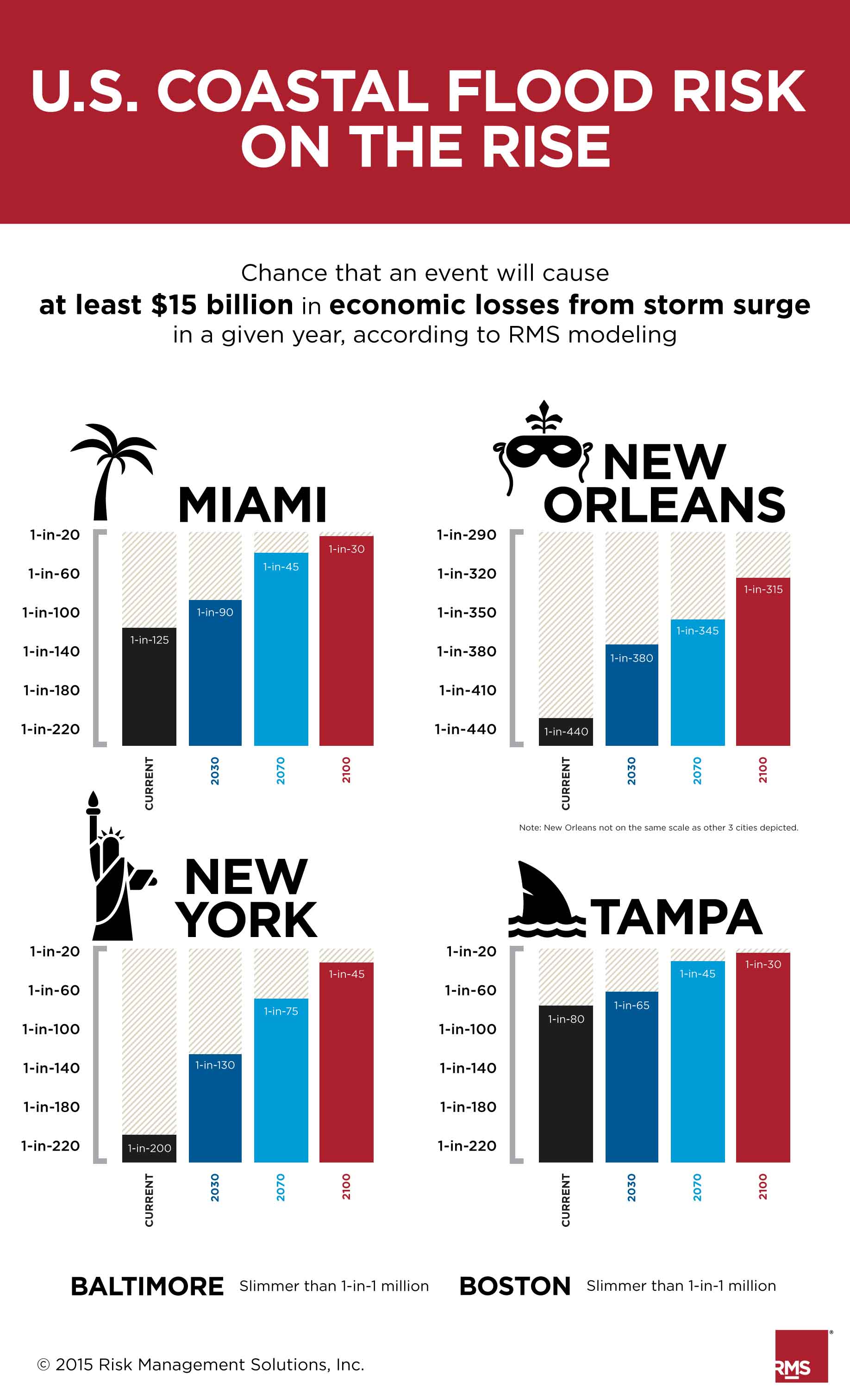As we come up on the tenth anniversary of Hurricane Katrina, a lot of the focus is on New Orleans. But while New Orleans is far from being able to ignore its risk, it’s not the most vulnerable to coastal flood. RMS took a look at six coastal cities in the United States to evaluate how losses from storm surge are expected to change from the present day until 2100 and found that cities such as Miami, New York, and Tampa face greater risk of economic loss from storm surge.
To evaluate risk, we compared the likelihood of each city sustaining at least $15 billion in economic losses from storm surge – the amount of loss that would occur if the same area of Orleans Parish was flooded today as was flooded in 2005. What we found is that while New Orleans still faces significant risk, with a 1-in-440 chance of at least $15 billion in storm surge losses this year, the risk is 1-in-200 in New York, 1-in-125 in Miami, and 1-in-80 in Tampa.
Looking ahead to 2100, those chances increase dramatically. The chance of sustaining at least $15 billion in storm surge losses in 2100 rises to 1-in-315 in New Orleans, 1-in-45 in New York, and 1-in-30 in both Miami and Tampa.

Due to flood defences implemented since 2005, the risk in New Orleans is not as dramatic as you might think compared to other coastal cities evaluated. However, the Big Easy is faced with another problem in addition to rising sea levels – the city itself is sinking. In fact, it’s sinking faster than sea levels are rising, meaning flood heights are rising faster than any other city along the U.S. coast.
Our calculations regarding the risk in New Orleans were made on the assumption that flood defences are raised in step with water levels. If mitigation efforts aren’t made, the risk will be considerably higher.
And, there is considerable debate within the scientific community over changing hurricane frequency. As risk modelers, we take a measured, moderate approach, so we have not factored in potential changes in frequency into our calculations as there is not yet scientific consensus. However, some take the view that frequency is changing, which would also affect the expected future risk.
What’s clear is it’s important to understand changing risk as storm surge continues to contribute a larger part of hurricane losses.





